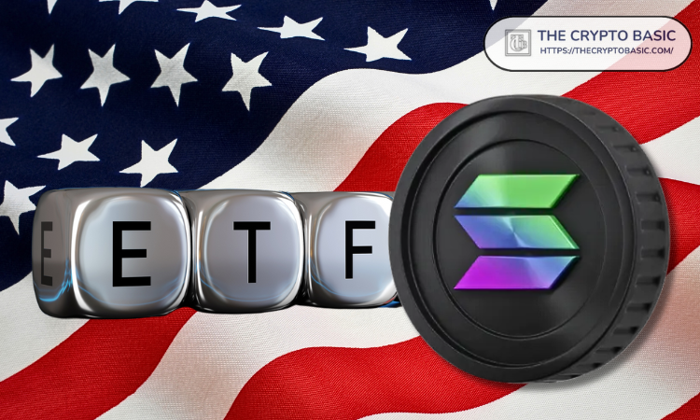The Solana consensus protocol is undergoing a significant transformation with Anza’s innovative approach to enhancing its blockchain infrastructure. Specifically, the introduction of Alpenglow, a new proof-of-stake consensus model, aims to replace the existing TowerBFT and prove-of-history systems. This groundbreaking shift promises to deliver Web2-level speed, which could revolutionize the network’s performance and make blockchain technology more accessible for real-time applications. Anza asserts that Alpenglow represents the most substantial change to Solana’s core protocol in its history, highlighting its commitment to achieving unprecedented network finalization times. By consolidating both voting transactions and data dissemination, Alpenglow could fundamentally alter how blockchain performs under various network conditions, setting a new standard in the industry.
Introducing a groundbreaking protocol within the Solana ecosystem, Anza has taken a bold step towards modernizing blockchain mechanics. With the launch of this new consensus mechanism, known as Alpenglow, the company strives to enhance network efficiency while addressing existing limitations. This innovative solution is not just a mere upgrade; it aims to overhaul the consensus methodology utilized in the Solana network, leading the way for improved transaction speeds and responsiveness that rival traditional internet infrastructure. Anza’s focus on proof-of-stake models signals a shift toward more sustainable and rapid blockchain operations, positioning Solana to effectively handle real-time application demands. As such, the implementation of Alpenglow is expected to redefine expectations for blockchain technology and network finalization.
Introduction to Anza and the Solana Consensus Protocol
Anza, a pioneering firm spinning out from Solana Labs, is at the forefront of revolutionizing the blockchain landscape with its innovative consensus protocol. The new Solana consensus protocol, known as Alpenglow, is designed to replace the existing TowerBFT and proof-of-history systems. This shift is aimed not just at enhancing performance but also at positioning Solana to offer Web2-level speeds in network transactions, which could redefine how decentralized applications function on the platform.
The introduction of Alpenglow signifies a commitment to advancing blockchain infrastructure, allowing Solana to compete with dominant internet technologies. Anza’s leadership team, including Quentin Kniep and Kobi Sliwinski, emphasizes the monumental nature of this change, calling it the largest alteration to Solana’s core protocol throughout its history. As this new consensus mechanism rolls out, it’s anticipated that the efficiencies will optimize user experiences and expand the capabilities of decentralized applications.
Understanding Alpenglow: Features and Innovations
Alpenglow integrates two key elements, Votor and Rotor, which aim to transform how Solana processes transactions. Votor is responsible for managing voting transactions and logic surrounding block finalization. In contrast, Rotor will replace the outdated proof-of-history timestamping method with a more efficient data dissemination protocol. By streamlining these processes, Alpenglow reduces the time it takes for all nodes in the network to agree on the state of transactions, enhancing both speed and reliability.
One of the remarkable goals of Alpenglow is to achieve network finalization in approximately 150 milliseconds, a feat that aligns Solana closer to traditional Web2 capabilities. This impressive latency means that decentralized applications can achieve real-time performance levels, which are crucial for a variety of use cases. Anza’s innovations are expected to set new standards, potentially attracting mainstream developers to explore new realms of application on Solana’s blockchain.
Votor: A Groundbreaking Approach to Voting and Finalization
Votor is a critical component of the Alpenglow protocol, designed specifically to replace TowerBFT. It enhances Solana’s ability to finalize transactions efficiently with two distinct voting modes. Once 80% of the stake participates in the voting process, Votor can finalize blocks in just one round. If only 60% of the stake is involved, it shifts to a two-round approach, maximizing participation and ensuring a robust consensus. This dual-mode system exemplifies Anza’s strategy of integrating flexibility with rapid processing.
The ability to reach consensus in less time creates a ripple effect across the network. Not only will this lead to faster transactions, but it also means that Solana will be better equipped to handle high-traffic situations. As Votor operates concurrently in its voting modes, the network’s resilience under challenging conditions will improve significantly, proving that Solana’s updated infrastructure can maintain performance even when faced with excessive loads.
Rotor: Streamlining Data Dissemination
Rotor serves as an essential technology within the Alpenglow framework, tasked with modernizing the data dissemination process on the Solana blockchain. By transitioning away from the proof-of-history timestamps, Rotor allows for more efficient propagation of information across the network. This change reduces latency, ensuring that all nodes quickly arrive at the same conclusion regarding the state of blockchain transactions.
In combination with Votor, Rotor is poised to facilitate a state of actual finality in record time. Anza’s emphasis on a 150-millisecond median finalization time positions Solana as a frontrunner in blockchain speed and efficiency. This level of performance is set to attract a broader range of applications, particularly those that depend on instantaneous data processing and real-time interactions.
Potential Impact of Alpenglow on Solana’s Development
The introduction of Alpenglow heralds a new chapter for Solana, offering the potential to dramatically enhance its overall functionality and adoption. With the promise of unprecedented latency and efficiency, Solana can now compete with established internet infrastructures. As developers consider deploying their applications on Solana, the implications of a robust blockchain with Web2-like performance become a compelling argument for adoption.
However, it is important to recognize that although Alpenglow aims to address some existing limitations, the transition will not completely shield Solana from potential network outages. Challenges remain, especially given the platform’s reliance on a single production-ready client, Agave. The upcoming launch of Firedancer, an independent validator client, is expected to bolster client diversity and enhance the network’s security, paving the way for a more resilient Solana ecosystem.
Challenges Ahead: Network Outages and Client Diversification
Despite Alpenglow’s promising features, the challenges that Solana has faced in the past, such as network outages due to overwhelming traffic or security vulnerabilities, create hurdles for its future. The reliance on a singular client like Agave poses a risk, as any vulnerability could compromise the entire network, leading to significant downtime.
The anticipated introduction of Firedancer as an independent client is a critical step toward achieving greater security and stability. With multiple clients managing network operations, the risk of total network failure can be significantly reduced. This diversification strategy not only fortifies the infrastructure but also positions Solana to handle increased transaction volumes without sacrificing performance.
The Future of Blockchain Infrastructure with Solana
Solana’s commitment to innovation through Alpenglow and its designed features presents a transformative outlook for blockchain infrastructure. By achieving Web2-level speeds, Solana is not just enhancing user experience but is also setting a new benchmark for what is expected from blockchain technologies. This could lead to a convergence of traditional web services with decentralized applications, broadening the scope and impact of blockchain technology in everyday life.
Furthermore, the integration of Alpenglow within Solana positions it as a leading platform for developers seeking efficient, scalable solutions. As the demand for high-speed, decentralized applications increases, Solana’s advancements could make it the go-to infrastructure for new and innovative applications, pushing the boundaries of what blockchain can achieve in various sectors, including finance, gaming, and beyond.
Conclusion: Embracing Innovation with Alpenglow
In conclusion, Alpenglow introduces an essential evolution in Solana’s consensus mechanism, potentially altering the course of its development and user engagement. By adopting a proof-of-stake framework and implementing technologies like Votor and Rotor, Anza is laying the groundwork for a new era in blockchain efficiency. The implications of this protocol extend far beyond speed; it presents an opportunity for Solana to redefine how decentralized applications are perceived and utilized.
As the industry continues to evolve, Solana’s Alpenglow may serve as a benchmark for other blockchain technologies looking to enhance their infrastructures and performance. By addressing existing limitations and preparing for future demands, Anza’s innovations elevate not only the Solana network but also the entire blockchain realm, driving forward the adoption of decentralized technologies.
Frequently Asked Questions
What is the Solana consensus protocol proposed by Anza?
The Solana consensus protocol proposed by Anza includes a new proof-of-stake system called Alpenglow, designed to replace the previous TowerBFT and proof-of-history mechanisms. This update aims to enhance the blockchain infrastructure of Solana significantly, achieving network finalization speeds comparable to Web2 applications.
How does Alpenglow improve the Solana consensus protocol performance?
Alpenglow improves the Solana consensus protocol by introducing two main components: Votor, which facilitates voting transactions and block finalization, and Rotor, which replaces the proof-of-history timestamping system. This new architecture aims for a median finalization latency of just 150 milliseconds, enabling Solana to compete with existing internet infrastructure’s speed and responsiveness.
What are the main components of the Alpenglow consensus protocol in Solana?
The main components of the Alpenglow consensus protocol are Votor and Rotor. Votor handles the logic for block finalization and voting transactions, while Rotor focuses on data dissemination, replacing the earlier proof-of-history system. Together, these components enhance the efficiency and speed of Solana’s blockchain infrastructure.
What is Votor in the context of the Solana consensus protocol?
Votor is a critical component of the Alpenglow consensus protocol that replaces TowerBFT in Solana. It is designed to finalize blocks efficiently, achieving finalization in a single round with 80% stake participation or in two rounds with 60% participation, thus streamlining the consensus process and improving network finalization times.
How does Alpenglow address the issue of network finalization in Solana?
Alpenglow addresses network finalization in Solana by introducing an innovative proof-of-stake mechanism that reduces latency in reaching consensus. Its design aims to achieve actual finality in approximately 150 milliseconds under various network conditions, representing a significant improvement in the Solana consensus protocol’s performance.
What challenges does Alpenglow face in enhancing the Solana consensus protocol?
Despite its advancements, Alpenglow acknowledges challenges like the possible security vulnerabilities within its single production-ready client, Agave. Transitioning to Alpenglow will not fully shield Solana from past network outages, but it is set to release a new independent validator client called Firedancer that aims to diversify and strengthen the network security.
Why is the introduction of Alpenglow significant for the Solana blockchain?
The introduction of Alpenglow is significant for the Solana blockchain as it represents the largest change to its core consensus protocol in history. This shift not only enhances speed and responsiveness to match Web2 infrastructure but also positions Solana for new application categories that demand real-time performance.
What competitive advantage does Solana gain from the Alpenglow protocol?
With the Alpenglow protocol, Solana gains a competitive advantage by drastically reducing block finalization times to an average of 150 milliseconds. This speed positions Solana to effectively compete with internet infrastructure, enabling it to support high-performance applications that require rapid transaction processing.
| Key Point | Details |
|---|---|
| New Consensus Protocol | Anza has proposed Alpenglow to replace TowerBFT and improve upon the current proof-of-history system. |
| Significance of Alpenglow | Anza claims this is the biggest change to Solana’s core protocol, aiming to enhance performance and competitiveness with Web2 infrastructure. |
| Components of Alpenglow | Alpenglow consists of Votor for voting and block finalization, and Rotor for data dissemination, replacing the existing timestamping system. |
| Finality Speed | The protocol aims for finality in about 150 milliseconds, improving responsiveness comparable to Web2 applications. |
| Voting Mechanism | Votor can finalize blocks in a single round with 80% stake participation, or two rounds with 60%, optimizing efficiency. |
| Network Resilience | Even with Alpenglow, Solana may remain vulnerable to outages; the introduction of an independent validator client, Firedancer, aims to enhance security. |
Summary
The Solana consensus protocol is set for a revolutionary upgrade with the introduction of Anza’s Alpenglow. This new proof-of-stake system aims to enhance speed and efficiency, challenging existing internet infrastructure and improving the overall performance of the Solana network. With innovations like Votor and Rotor, Alpenglow is designed to reduce latency and achieve faster transaction finality, positioning Solana as a competitive player in the blockchain space. However, while promising, it also highlights the ongoing challenges in maintaining network stability and security, especially with the reliance on a single production client.
The Solana consensus protocol is being revolutionized with the introduction of Alpenglow, a new proof-of-stake model proposed by Anza, a spinoff from Solana Labs. Aiming to replace the existing TowerBFT and proof-of-history mechanisms, this innovative protocol is set to accelerate network performance to Web2 standards. Alpenglow promises an unprecedented block finalization speed, potentially achieving actual finality in just 150 milliseconds, thus enhancing Solana’s blockchain infrastructure significantly. This transformation signifies not only a technological leap for Solana but also positions it as a competitive alternative to traditional internet frameworks. As the blockchain ecosystem continues to evolve, the Solana consensus protocol through Alpenglow may redefine the boundaries of decentralized application responsiveness.
In the world of decentralized finance, the term ‘Solana consensus protocol’ refers to the foundational mechanisms that drive the network’s performance. Anza, a pioneer in blockchain technology, is spearheading a groundbreaking shift with its latest proof-of-stake system, Alpenglow. This development aims to replace outdated technologies like TowerBFT and proof-of-history, facilitating faster network finalization and improved operational efficiency. The Alpenglow protocol not only upgrades Solana’s core functionality but also aligns it closer to the rapid response times typically observed in Web2 applications. By embracing this new framework, Solana is setting the stage for a more responsive and robust blockchain infrastructure.














